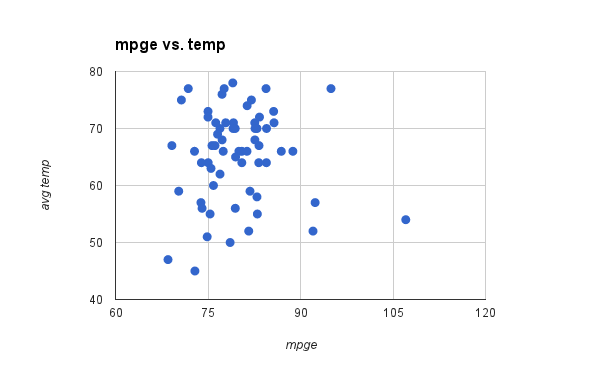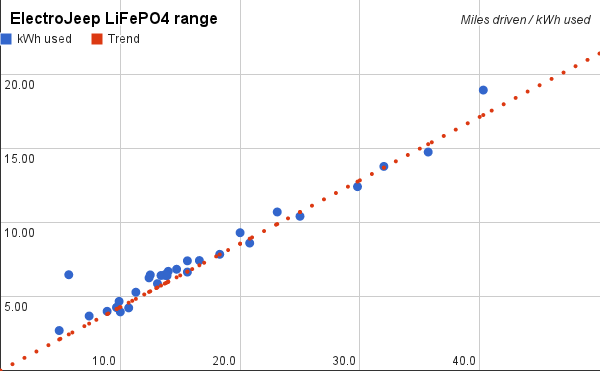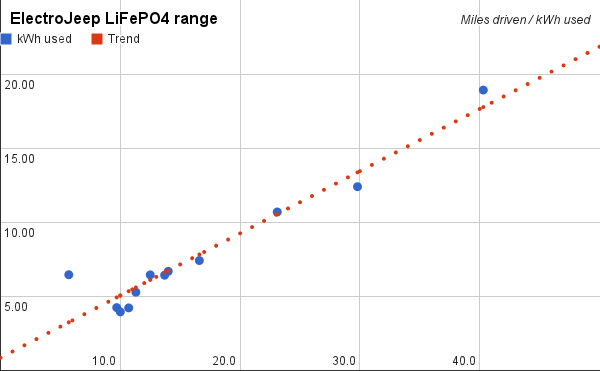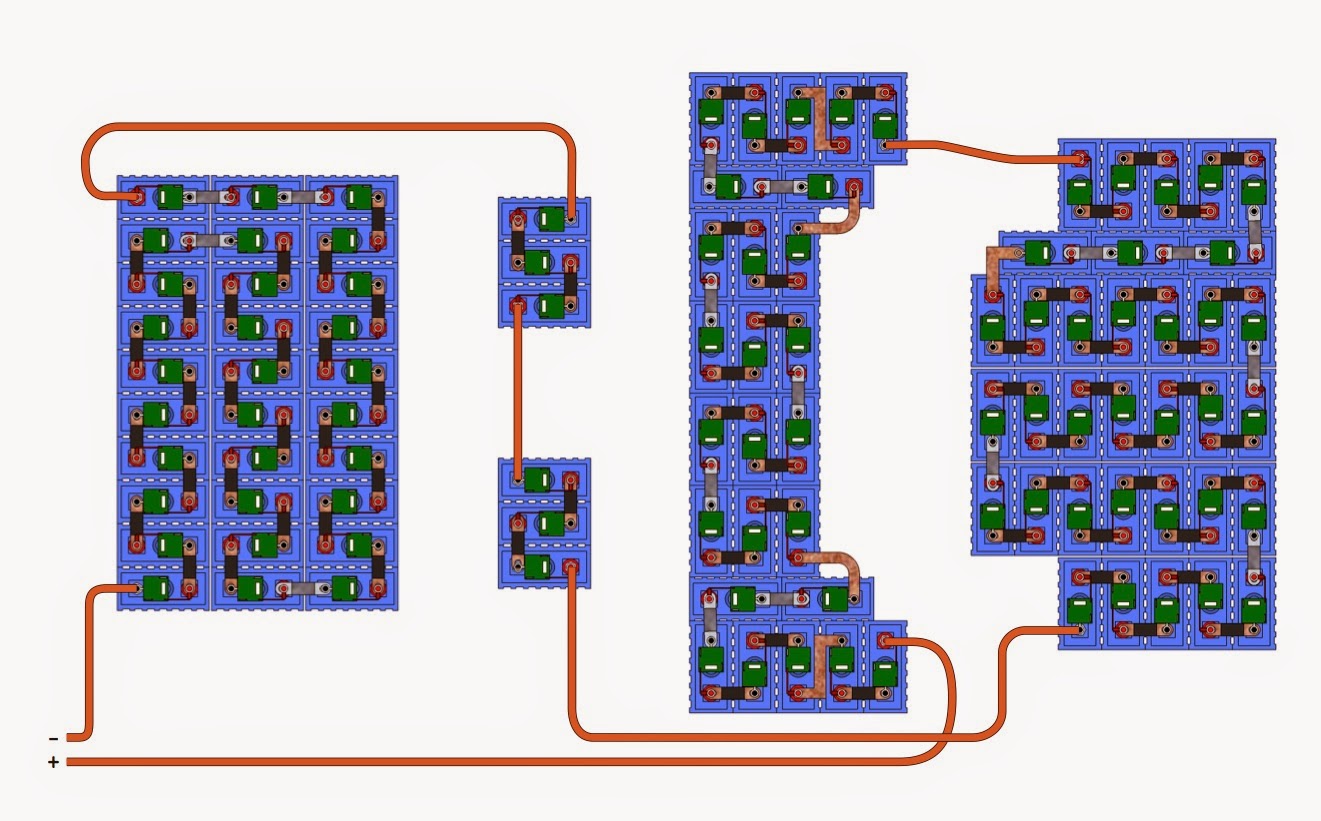Yesterday, I passed 1000 miles since I got back on the road with LiFePO4 cells. I've continued to track my daily drives. Here is the chart as of this morning:
You can see that it is very linear - not a lot of variation other than two outliers (both of which happened early on, and both of which were unusual circumstances). From this, some statistics:
Average daily drive: 15.9 miles
Average daily energy used: 7.13 kWh
Average watt-hours/mile: 424.5
Average mpge: 79.4
The energy consumption numbers are from the wall and include any charger inefficiencies, etc. The electricity for the average daily drive would cost me 57 cents, if it were not for the fact that much of our electricity comes from our rooftop solar array. Given that the Jeep got 19 mpg in-city on gasoline (on a good day!), I save roughly $950 per year on gasoline at today's price of roughly $3.50 per gallon.
In related news, I've tracked the efficiency versus temperature. There is not a lot of correlation here:
From what I know of LiFePO4, low temperature will affect capacity, not efficiency. Basically, when cold, LiFePO4 sags a lot more than when warm. This translates to fewer watt-hours available, and, since watts required to drive is independent of temperature (if a cabin heater is not included), colder temperature means lower range.
You can see that it is very linear - not a lot of variation other than two outliers (both of which happened early on, and both of which were unusual circumstances). From this, some statistics:
Average daily drive: 15.9 miles
Average daily energy used: 7.13 kWh
Average watt-hours/mile: 424.5
Average mpge: 79.4
The energy consumption numbers are from the wall and include any charger inefficiencies, etc. The electricity for the average daily drive would cost me 57 cents, if it were not for the fact that much of our electricity comes from our rooftop solar array. Given that the Jeep got 19 mpg in-city on gasoline (on a good day!), I save roughly $950 per year on gasoline at today's price of roughly $3.50 per gallon.
In related news, I've tracked the efficiency versus temperature. There is not a lot of correlation here:
From what I know of LiFePO4, low temperature will affect capacity, not efficiency. Basically, when cold, LiFePO4 sags a lot more than when warm. This translates to fewer watt-hours available, and, since watts required to drive is independent of temperature (if a cabin heater is not included), colder temperature means lower range.










